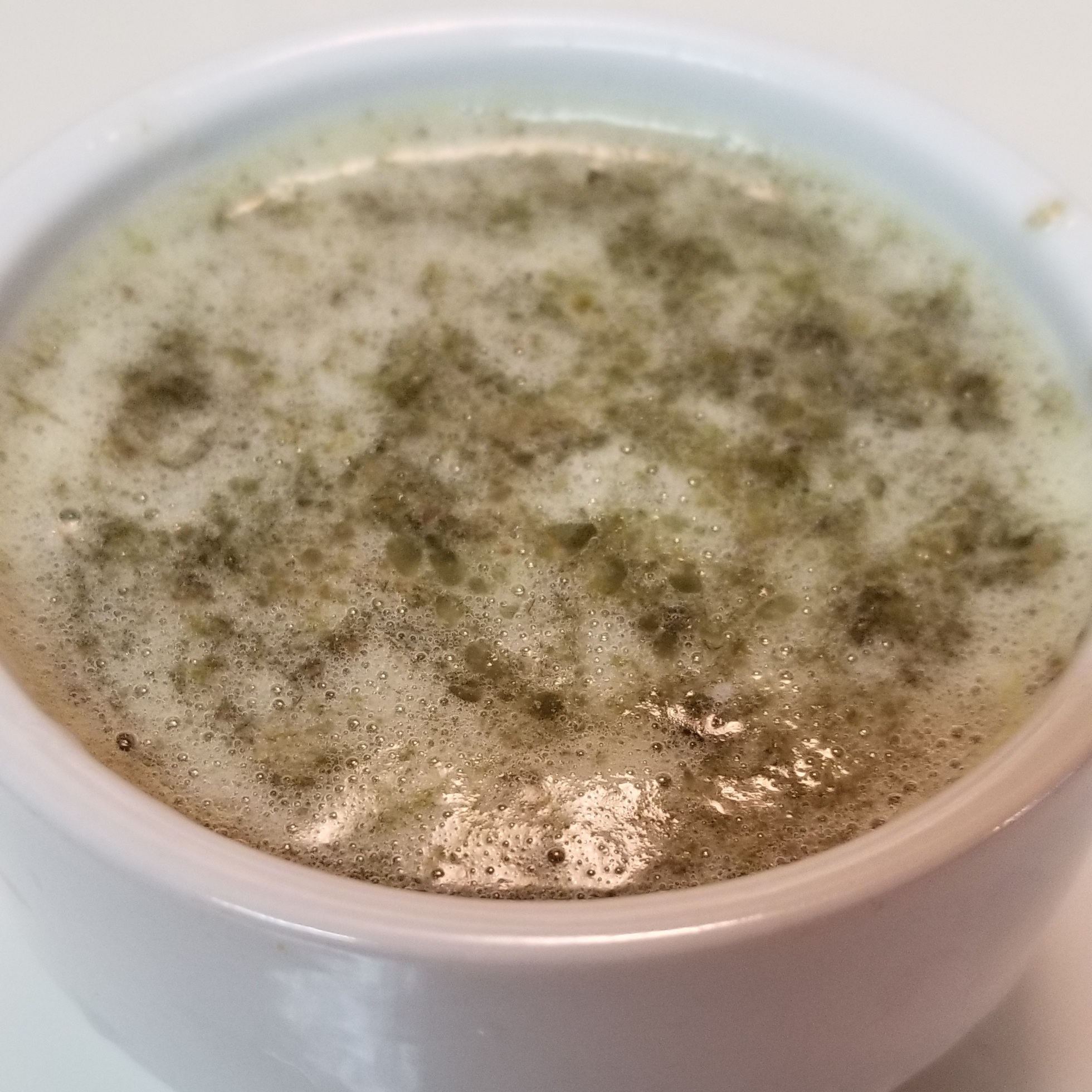We recently had a chance to try out some seaweed butter recipes.
Typically seaweed butter recipes call for dried nori, which is expected due to the availability of dried nori in most grocery stores. We wanted to try using fresh seaweeds, nori and dulse. After nori and dulse butters were made, we used them on a variety of simple dishes to compare flavors.
Directions to make seaweed butter using fresh seaweeds.
Grab a large handful of fresh nori or dulse (~2-3 oz).
Add seaweed to a food processor with a little water and puree.
Strain pureed seaweed through a coffee filter to remove excess water.
Heat a skillet to medium-low and melt a half stick of non-salted butter (4 Tbs).
Mix in strained pureed seaweed.
Transfer mixture to a dish, cover, and refrigerate.
The seaweed butter can stay in refrigerator for up to two weeks and can now be used at any time in place of regular butter.
Now for the fun part. We used the nori and dulse butter on a a few simple dishes to assess the flavor enhancement and differences. We tried both butters on fried eggs, sauteed zucchini, sauteed mushrooms, bread, mixed veggies, and asparagus.
Dulse Butter: Dulse kept its red color when used to saute vegetables. It gave a much more umami meaty flavor to dishes compared to nori. This is to be expected as dulse contains more glutamic acid which is responsible for umami flavor. Dishes that used dulse had little to no ocean flavor. Dulse butter would be good for any dish where a more savory flavor is wanted.
Nori Butter: Nori butter became dark green when sauteed. Dishes cooked with nori had more ocean flavor than dulse, likely because nori has a higher concentration of lipids. Longer chain fatty acids, like fish oils, give a stronger ocean flavor and are good for human health. Nori butter would better complement seafood dishes like crab, oysters, and fish.
Overall the seaweed butters were well received, even by people that don’t particularity enjoy seafood. The crowd favorite was umami mushrooms, white mushrooms sauteed in dulse butter. These were very simple dishes so the differences in the butters could be detected, that being said, adding new elements such as garlic and lemon would be great things to try.
Dulse
Pureed nori in melted butter
Umami mushrooms sauteed in dulse butter
Nori butter in dish
Sauteed zuchini with dulse butter.





